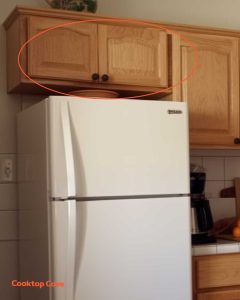
2. Organize with Bins and Baskets
To keep the cabinets neat and items easily accessible, use bins or baskets. Examples include:
Baking Supplies: Group measuring cups, rolling pins, and pastry brushes in labeled bins.
Canned Goods: Organize soups, sauces, and vegetables in clear plastic bins.
Cookware Accessories: Store pot holders, oven mitts, and trivets in a basket for easy access.
3. Maximize Vertical Space
Make the most of vertical space by adding extra shelves or adjustable racks. You can store:
Cookbooks: Display your cookbooks vertically to save space and showcase your collection.
Spices: Install small shelves for your spice jars to create a compact spice rack.
Glassware: Store seldom-used glassware or wine glasses vertically on shelves.
4. Store Bulk Items and Kitchen Linens
These cabinets are ideal for bulk items and kitchen linens:
Bulk Staples: Keep extra flour, sugar, or rice in airtight containers.
Paper Towels: Stock up on paper towels and tissues to free up other storage areas.
Kitchen Towels: Store kitchen towels, dishcloths, and cleaning rags here for easy access.
5. Seasonal and Special Occasion Items
Use these cabinets for items needed only during specific seasons or special occasions:
Holiday Decor: Store holiday-themed dishes, table linens, and decorations until needed.
Picnic Supplies: Keep picnic blankets, outdoor dining accessories, and reusable plates for warm-weather outings.
Special Serving Dishes: Reserve space for fine china or elegant serving platters used on special occasions.
6. Regular Maintenance and Safety
To keep the cabinets functional and safe:
Periodically review and declutter the contents to remove items you no longer need.
By using these tips, you can transform those often-overlooked cabinets into a practical and organized part of your kitchen.